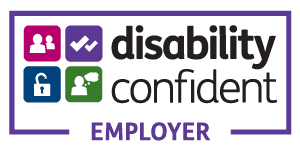Imagine a world where medical knowledge stood still. Thankfully, it doesn't, and as a physician, your commitment to continuous learning is what drives better patient outcomes. In today's fast-paced healthcare environment, keeping up with emerging treatments, new technologies, and evolving regulations isn't merely a suggestion—it's a fundamental pillar of quality care. This is where Continuing Medical Education (CME) steps in. More than a mandate, CME is your ongoing journey toward medical excellence, professional growth, and ensuring patient safety. It covers a vast spectrum of knowledge, from cutting-edge clinical practices to essential skills in healthcare management and even medical coding.
In this blog, we'll uncover the essence of CME, its undeniable importance, the various credit categories, and actionable strategies to help you leverage it effectively.
What Is Continuing Medical Education (CME)?
Continuing Medical Education (CME) encompasses formal learning activities that enable licensed physicians to maintain, improve, and expand their clinical knowledge, professional skills, and overall performance throughout their careers.
These educational activities are designed not only to enhance patient care but also to support physicians in areas such as leadership, teaching, and practice management. According to the Accreditation Council for Continuing Medical Education (ACCME), CME content may include a wide range of topics, such as:
- Healthcare facility management – for physicians in administrative or leadership roles
- Educational methods—for those involved in academic or clinical teaching
- Practice management – to help improve service delivery and operational efficiency
- Medical billing and coding—for better handling of reimbursement processes
Types of CME Credits
In the United States, CME is generally divided into two categories:
- Category 1 Credits
These are accredited by recognized bodies such as the ACCME or a State Medical Society (SMS). They are typically required for state medical license renewal and hospital credentialing. - Category 2 Credits
These cover self-directed and informal learning activities, such as reading peer-reviewed medical journals, teaching medical students, or participating in non-accredited workshops.
CME Formats: Learning That Fits Your Schedule
Today’s CME options are more flexible than ever, allowing physicians to tailor learning to their preferences and time constraints. Common CME formats include:
- In-person conferences and seminars.
- Live webinars and virtual symposiums.
- Online self-paced courses, modules, and podcasts.
- Journal-based learning.
- Case-based learning and interactive reviews.
Whether you're attending a major medical conference or listening to a CME-accredited podcast on your commute, these learning opportunities ensure you're always one step ahead in your field.

The Importance of CME for Physicians
Medical knowledge is doubling at an astonishing rate. According to research published in the National Library of Medicine, clinical knowledge is estimated to double every 73 days.
Here’s why that matters:
- Staying Current: Medical knowledge and treatments evolve rapidly, and CME keeps doctors up-to-date with the latest advancements.
- Better Patient Care: Updated knowledge leads to more accurate diagnoses and effective treatments, significantly improving patient safety and outcomes.
- Meeting Requirements: CME fulfills state licensing and specialty board certification mandates, which are crucial for doctors to legally practice.
- Professional Growth & Skill Development: It helps physicians refine existing skills and learn new ones, both clinical and non-clinical.
- Adapting to Challenges: CME educates doctors on new diseases and public health issues, helping them adapt to evolving healthcare needs.
- Building Trust: Patients trust doctors who are knowledgeable and committed to ongoing learning.
- Career Advancement: Actively engaging in CME demonstrates a commitment to excellence, opening doors to leadership roles, hospital credentialing, partnership opportunities, and new practice ventures.
- Career Competitiveness: Staying current through CME helps doctors remain competitive and thrive in their careers.
CME Requirements
The requirements for Continuing Medical Education (CME) for physicians in the US are multifaceted and can be complex, as they stem from several different authorities. There isn't one single, universal set of requirements. Instead, they come from:
1. State Medical Licensing Boards
In the US, physicians are primarily obligated by state medical licensing boards, which universally require a specific number of CME hours for license renewal. These hours, along with particular topics such as opioid prescribing, ethics, or patient safety, vary significantly by state. You must directly consult your state's medical board for precise details. The Federation of State Medical Boards (FSMB) offers a comprehensive resource for locating individual state board information.
2. Medical Specialty Certifying Boards
Secondly, medical specialty certifying boards, operating under the umbrella of the American Board of Medical Specialties (ABMS), enforce Maintenance of Certification (MOC) programs. These programs integrate CME as a crucial component of "Lifelong Learning and Self-Assessment" to ensure specialists remain current in their fields. While the ABMS sets the overall framework, the exact CME requirements for MOC vary considerably by individual specialty board, necessitating direct consultation with the relevant board's website.
3. Hospital Credentialing and Privileging
Finally, hospital credentialing and privileging committees also factor CME into their review processes, requiring physicians to demonstrate ongoing education to maintain their medical staff privileges and ensure continued competence. Across all these requirements, AMA PRA Category 1 Credit, defined and standardized by the American Medical Association (AMA), is the gold standard of CME credit, widely accepted for meeting these diverse obligations.
Making CME Work for You
Juggling patient care and education can be tricky, but it’s possible with smart planning:
- Use CME Stipends: Many employers offer financial support—ask HR or your medical director.
- Go Virtual: Platforms like AudioDigest, UpToDate, and Medscape Education offer accredited online courses.
- Pick Relevant Topics: Choose CME that aligns with your current caseload or professional goals.
- Collaborate with peers during grand rounds.
- Attend multidisciplinary case conferences.
- Engage in reflective practice and mentorship.
Final Thoughts: CME Is a Career Investment
CME isn’t just about meeting a deadline—it’s about enhancing your ability to care for others while growing as a medical professional. As the healthcare landscape becomes more complex, staying current ensures that you remain not just competent but exceptional.
Ready to Take the Next Step in Your Career?
At Verovian Medical Recruitment Agency, we believe your professional growth is paramount. That's why we partner exclusively with healthcare facilities that genuinely value and invest in physician education. Our job opportunities go beyond just a paycheck; they offer flexible schedules and robust support for your ongoing training.
We're dedicated to connecting you with roles where continuous learning isn't just encouraged, it's built in. This means you'll find positions that foster your development, allowing you to stay at the forefront of medical advancements and enhance your skills throughout your career.
Ready to find a physician job that invests in you? Register now to gain access to our unique opportunities!




